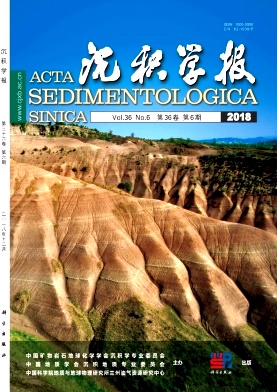Formation Mechanism and Environmental Significance of Holocene Calcareous Root Tubes in the Alashan Desert, as Revealed by Micromorphology
doi: 10.14027/j.issn.1000-0550.2018.111
- Received Date: 2018-01-12
- Rev Recd Date: 2018-03-07
- Publish Date: 2018-12-10
-
Key words:
- Alashan Desert /
- calcareous root tubes /
- secondary carbonate /
- Holocene /
- climate change
Abstract: Holocene calcareous root tubes occur widely across the hinterland of the Alashan Desert and have been used for paleoenvironmental reconstructions. However, a clear and common understanding of their formation mechanism is still lacking, which limits their application to paleoenvironmental reconstructions. In addition, whether calcareous root tubes have any specific environmental significance needs to be investigated further. In this study, 32 calcareous root tube samples from the Alashan Desert were analyzed by scanning electron microscope to observe the calcite crystal mats or calcified filaments that characterize their absolute biogenic origin. Results showed that these structural features existed within all 32 calcareous root tube samples, which indicated that plant roots and rhizosphere microorganisms participated in the formation of the calcareous root tubes. Under a pronounced seasonal soil moisture regime, dissolved bicarbonates precipitate around the roots because of water evaporation in the rhizosphere and then cement loose sediments or sands, resulting in formation of calcareous root tubes. Recrystallization of groundwater could not explain the formation of such tubes. Calcareous root tube formation was found to be affected by soil moisture content and evaporation, which demonstrated that these tubes have explicit environmental significance. Furthermore, paleoenvironmental signals can be obtained from them to reconstruct changes in paleovegetation and paleo-effective moisture. This study could provide new valuable archives of paleoclimatic changes in desert hinterlands and develop research into paleoenvironmental evolution in arid regions.
| Citation: | LI ZhuoLun, GAO YouHong, LI RuoLan, WANG NaiAng, ZHU RuiXia. Formation Mechanism and Environmental Significance of Holocene Calcareous Root Tubes in the Alashan Desert, as Revealed by Micromorphology[J]. Acta Sedimentologica Sinica, 2018, 36(6): 1131-1138. doi: 10.14027/j.issn.1000-0550.2018.111 |






 DownLoad:
DownLoad: